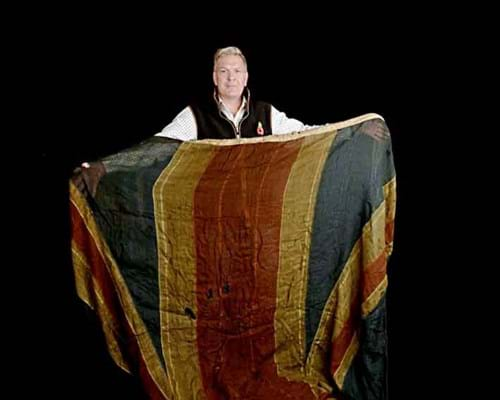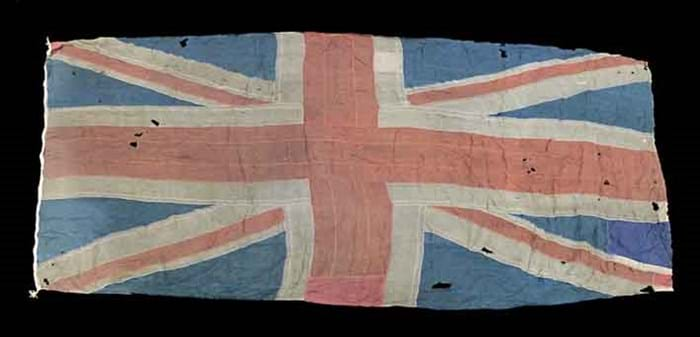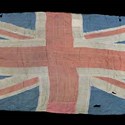The 14 x 7ft (2.96 x 2.13m) battle-scarred flag, dotted with holes from musket balls, has been in the family of the vendor – folded in a cupboard – since the 1830s.
It is thought to have been given by Capt Sir William Bayntun, who commanded HMS Leviathan at Trafalgar.
He kept it after the battle before giving it to his friend the Duke of Clarence, who later (as William IV) passed it to Lieutenant Nicholas Cory, a senior officer on the Royal Yacht George.
It was understood to have been a thank-you for Cory’s help in winning a boat race.
The flag is now being sold by Arthur Cory, a direct descendant, to pay for repairs to the family home, Penllyn Castle near Cowbridge in Wales.
Flag History
The practice of flying the Union flag on Navy ships died out during the 1720s as rigs and sail plans developed, but Nelson commanded all his ships to set the flag from the fore-topmast stay to reduce the chance of ‘friendly fire’.
Only two other Trafalgar Union Jacks are thought to survive.
That which flew above HMS Minotaur is held by the National Maritime Museum at Greenwich. Another from HMS Spartiate was sold on behalf of the Australian descendants of Lieutenant James Clephan by maritime specialist Charles Miller for £325,000 in 2009 to an American collector.
Both have cast-iron provenances.
Roland Elworthy, of Norfolk-based Holt’s, says he has no doubt as to the history of the Penllyn Castle flag.
“How it passed from the ship and arrived with the Cory family will probably always remain anecdotal, but a great deal of ongoing research coupled with the opinion of independent specialists indicates that we have a genuine Trafalgar Union flag,” he adds.
Leviathan, a 74-gun third-rate ship-of-the-line led by Capt Bayntun, was the fourth ship in Nelson’s line behind the Victory. She was engaged in battle for over three hours but her losses were, by comparison, remarkably light with four killed and 22 wounded.
After such a glorious career Leviathan’s end was a rather sad one. Her final commission was in 1814-16 before she was struck off and converted for use as a prison hulk. This she did for 28 years before becoming a target ship at Portsmouth and finally being broken for firewood in 1848.









